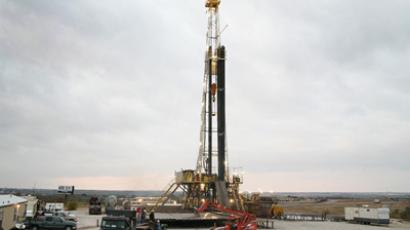US fracking sites impact health - report

US residents living near gas fracking sites frequently develop health problems as chemicals used in the gas extraction have been tracked in water and air surrounding the sites, a new report has found.
The Marcellus Shale natural gas field, which stretches across several eastern states, is the biggest and cheapest natural gas field in the US and could contain “almost half of the current proven natural gas reserves in the US,” a Standard & Poor’s report said this week.
But the fracking report, titled “Gas Patch Roulette: How Shale Gas Development Risks Public Health in Pennsylvania,” details health impacts faced by residents near Marcellus Shale. The report, conducted by Earthworks’ Oil & Gas Accountability Project, shows that negative health impacts are not isolated incidents. Close to 70 percent of those living near a fracking site reported an increase in throat irritation and 80 percent suffered from sinus problems after drilling began.
Residents were found to have health complications resulting from chemical exposure due to their proximity to fracking sites, shortly after gas development began. The closer a resident lived to a fracking site, the worse their health became. Half of all survey participants living near such a development site reported they had no problems before drilling began, but suffered from allergies, asthma, arthritis, cancer, high blood pressure, and heart, kidney, pulmonary and thyroid conditions.
Of survey participants, 81 percent also reported experiencing bad odors from the chemicals used in gas and oil development. Some of these chemicals include ammonia, chlorine, gas, propane, ozone, diesel, sulfur and kerosene.
“The clear association between gas development and public health impacts revealed by this research demands that states stop ignoring the problem and start developing the standards necessary to protect the public,” said President of Subra Company, Wilma Subra.
But people haven’t proven to be the only victims of fracking. The report described that 22 out of 108 interviewed residents had pets or livestock that showed health complications after gas development began, including hair loss and seizures.
The Environmental Protection Agency has been struggling to properly oversee shale oil and gas development due to a lack of staff, resources, data and a high number of legal loopholes.
“For too long, the oil and gas industry and state regulators have dismissed community members’ health complaints as ‘false’ or ‘anecdotal,’” said project author Nadia Steinzor in a press release published by Earthworks. “With this research, they cannot credibly ignore communities any longer.”














